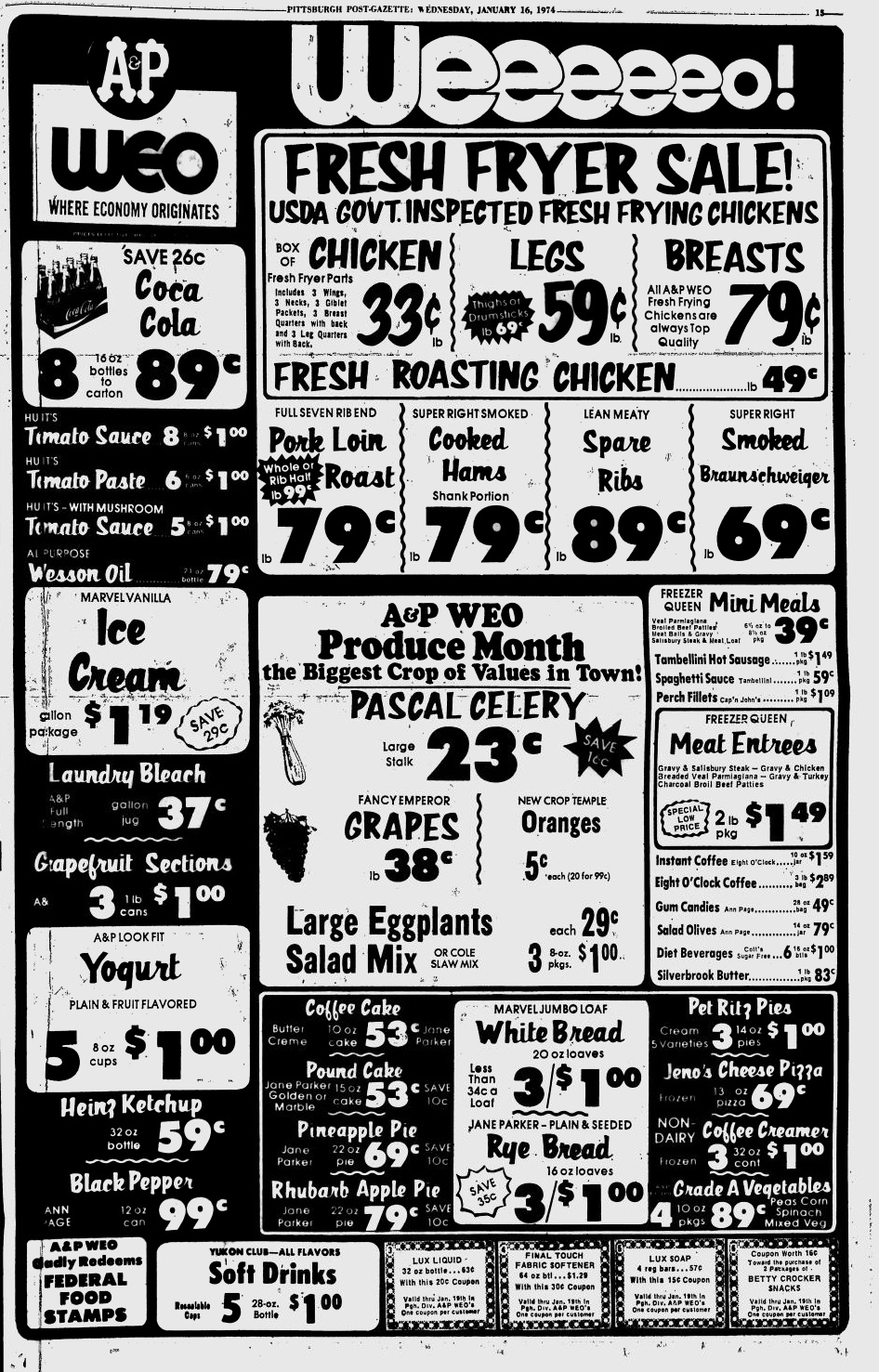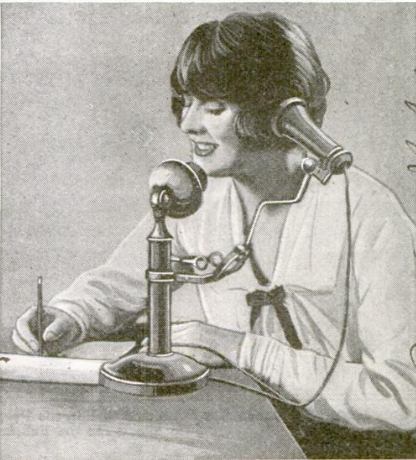 For a snapshot of grocery prices 50 years ago, this ad for A&P appeared in the Pittsburgh Post-Gazette on January 16, 1974.
For a snapshot of grocery prices 50 years ago, this ad for A&P appeared in the Pittsburgh Post-Gazette on January 16, 1974.
The prices look like a bargain, but there’s been a lot of inflation in 50 years. According to this online inflation calculator, one dollar in 1974 is the equivalent of about $6.18 in today’s money. If you wanted a fast dinner, you could buy the Freezer Queen two pound package of Charcoal Beef Patties for $1.49, and a package of frozen vegetables for about 22 cents (4 for 89 cents). For the side, you can get a loaf of bread for about 33 cents (3 for a dollar). The Kroger ad in the same issue of the paper shows that margarine is also 33 cents a pound. For desert, you can have ice cream for $1.19 a gallon, and coffee, $1.59. So the cost to feed a family (with food left over) would be $5.15, or about $32 in today’s money.
If you were in a hurry, you could get the 13 ounce frozen pizza for 69 cents, and an 8 pack of Coke for 89 cents, for a total of $1.58, or almost $10 in today’s money.
If you were shopping for dinner in 1974, what would you buy?
 As shown here in the January 1939 issue of Radio Retailing, it looks like a few boys 85 years ago got the memo that the place to meet girls (and learn a useful skill) was to take typing class.
As shown here in the January 1939 issue of Radio Retailing, it looks like a few boys 85 years ago got the memo that the place to meet girls (and learn a useful skill) was to take typing class.













